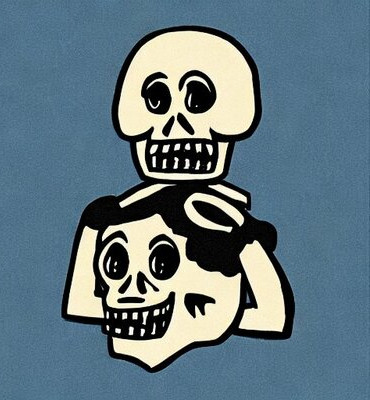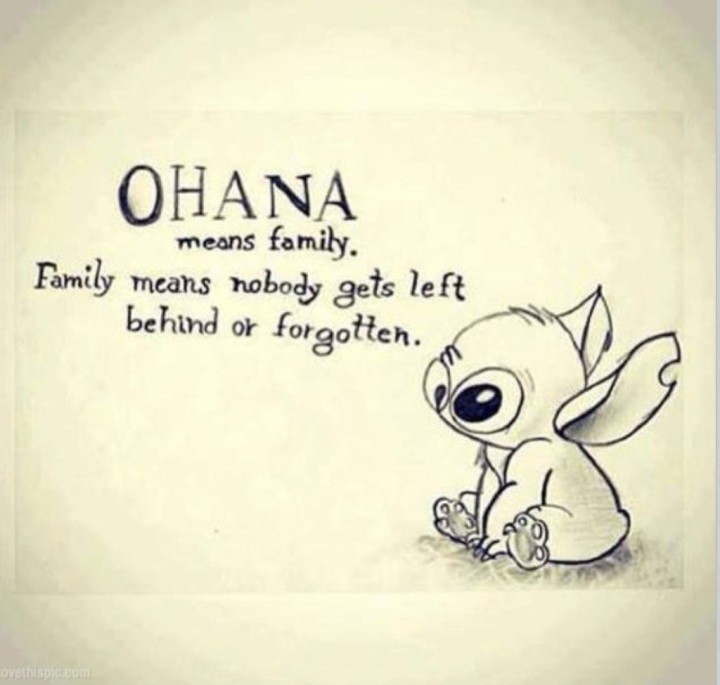Used a couple of US recipes recently and most of the ingredients are in cups, or spoons, not by weight. This is a nightmare to convert. Do Americans not own scales or something? What’s the reason for measuring everything by volume?
Apparently the French sent over a metric system for the Americans to use, but the ship was lost.
I’ve seen numerous sources for this.
OP is asking about volume vs weight, not metric volume vs imperial volume.
If the US had adopted the metric system it wouldn’t matter.
And that still doesn’t answer the question.
You do know that metric measures both volume and weight, right? A cubic centimeter of water weighs one gram.
You do know that only water weighs on gram per ml, right?
This is a great fact for if you’re trying to make hot water soup from a recipe written in metric volume measures and you only have a scale.
You might get away if you’re just trying to measure apple juice or something else that’s mostly water, but good luck making Rice Krispie treats
While we’re making soup, let’s base the entire temperature scale on water, too.
You can still list an ingredient using one or the other on a recipe. It may be a simple conversion, but 1:1 is still a conversion.
And one pint of water is one pound.
You’ve completely missed the point, which is that most of the world measures ingredients (like flour for instance, where one pint is not one pound) by weight and not by volume.
Measuring by weight has only been a thing for cooking since digital scales became cheap.
A pint of water is not one pound, its 1.04318, which is a significant difference.
In what widely-used context is a .04318 difference significant?
Not soup. Not bread.
I don’t think even concrete would suffer noticeably from that difference.
Canada uses a mixture of imperial and metric, but not weights, so that’s an entirely false conclusion you’ve come to.
And that doesn’t help much, that’s only at sea level and a certain temperature, go do some baking with those exact conversions on a mountain and your cake won’t turn out at all.
deleted by creator
I have a cup that’s imperial on one side and metric on the other.
someone should make an alternate history tv show where the ship made it. bonus if it’s of a parody kind.
Watch some cooking shows on YouTube where they cook from two hundred year old cookbooks. Weighing stuff is a modern thing. All the “ye olde recipes” from Europe and the colonies were done in cups, spoons, and some other volume measurements we don’t use anymore like “jills”. (If they even bother to specify meaurements.)
“the” and “ye” are amusingly redundant next to each other.
I was positively intrigued the day I learned “ye olde shoppe” is pronounced exactly the same way as “the old shop”.
“A handful of this, a sprig of that, a penny weight of some other stuff”
I see someone watches tasting history
My favourite is when the book told him to put on a “good amount” of something
Back in my childhood (60+ years ago) we had recipes that called for a “breakfast cup’ of this and a “teacup” of that. And yes, we did have actual breakfast cups and teacups, which had significantly different volumes. What kind of cup do they use in the US I wonder?
5 rods to the hogs head.
Jiggers. 1.5 oz. Or a pony shot (small end of the jigger) 0.75 oz.
Bartenders routinely measure mixed drink additives in “barspoons”.
My grandmother in law has a biscuit recipe that starts with “fill the bowl with flour”. What bowl? The bowl she’s been making biscuits with for 50 years.
Point is, people left to their own devices will use whatever measurement is handy.
The imperial system is a nightmare. A lot of us hate it and agree that metric is far easier. I grew up with the imperial system and still don’t know the conversions between quarts, pints, ounces, and cups. Blame the French and British, we got it from them!
I’m currently calorie counting in order to lose weight and I weigh everything in grams because it’s easier.
This isn’t about imperial vs metric, it’s about measuring by mass vs volume. A good example here is flour. Weighing out 30 grams (or about 1 ounce) of flour will always result in the same amount. On the other hand, you can densely pack flour into a 1/4 cup measuring cup, you can gingerly spoon it in little by little, or you can scoop and level. When you do this you’ll get three different amounts of flour, even though they all fill that 1/4 cup. Good luck consistently measuring from scoop to scoop even if you use the same method for each scoop.
Jokes on you. When we measure flour on the moon, it’s the same as on earth. You just don’t understand our advance measurement technique with your primitive weighing.
Joke aside, scales on earth measure force and show mass on the assumption of the gravitational pull on earth. On a moon colony, you’d use measuring scales with a different value for the gravitational pull, and get the same values for mass as on earth.
Edit: Also, if anyone finds this stuff interesting to think about. You can measure mass without any force of gravity, but having the measuring device accelerate (e.g. shake) the stuff you want to measure. From “F=ma”, knowing F and a, you get m.
Something something elevation and atmospheric pressure resulting in a proper measurement across altitude… Or something.
Blame the French and British, we got it from them!
Like 99% of the world, the French and British long ago managed to overcome the imperial system. Actually, the French spearheaded the metric world.
America just failed, time and again, to follow the times.
The british didn’t quite overcome the old ways of measuring. They still use miles, pints, stone, and so on.
Companies just need to print the metric amount on the box as well.
We like mixing them up too. Tyres are measured using three numbers, two of which are in mm, the other (wheel diameter) is in inches.
The british didn’t quite overcome the old ways of measuring.
Not completely, agreed, but they are miles ahead of the Americans. :-)

8 ounces to a cup, 2 cups to a pint, 2 pints to a quart, 4 quarts to a gallon.
And now to commit that to memory for the nth time…and immediately forget it.
Because it’s quicker to just use a measuring cup than by weighing it out every time, I assume.
I do have a scale, but I mostly use it when portioning out a big chub of ground turkey or beef.
If you’d use metric, then weight & measurements on measuring cups would be basically the same. Like, 1 liter or milk or water is exactly 1 Kg. Using arbitrary measurements like “cups” or “feet” are just confusing and prone to error.
Milk has a specific gravity slightly higher than 1, so that isn’t accurate.
Also, “cups” and “feet” aren’t arbitrary. They aren’t part of the metric system, but a cup is a standardized unit of volume and a foot is a standardized unit of length.
Exactly. How is a foot anymore arbitrary then a meter?
Or a cup anymore arbitrary then an ounce?
Imperial measurements were based on arbitrary things, metric has specific scientific definitions for their weights.
1l of water is 1kg at sea level, why the fuck is kings foot size the defacto foot?
Imperial measurements were based on arbitrary things, metric has specific scientific definitions for their weights.
What do you mean? A pound is legally defined as 0.45359237 kilograms.
And the kilogram is defined:
The kilogram, symbol kg, is the SI unit of mass. It is defined by taking the fixed numerical value of the Planck constant h to be 6.62607015×10^−34 when expressed in the unit J⋅s, which is equal to kg⋅m^2 ⋅s^−1, where the metre and the second are defined in terms of c and ΔνCs.
These are all currently defined off of the same universal constants, just with different multipliers, which are all arbitrary numbers: 6.62607015 is just about as arbitrary as 0.45359237. Hell, the number 10 is arbitrary, too, so we still use a system for time based on dividing the Earth’s day into 24 and 60.
Like, I get that there’s some elegance in the historical water-based definitions derived from the arbitrary definition of length, but the definition of “meter” started from about as arbitrary a definition as “foot” (and the meter was generally more difficult to derive in the time of its adoption based on the Earth’s dimensions).
I’ll nitpick that said definition is also arbitrary. Why is it 1l of water at sea level, and not molecular weight of the water? And why a Liter anyway.
Even metric units like time are somewhat arbitrary. Why is a second based on caesium frequency, and not some other element?
I’ll nitpick that said definition is also arbitrary. Why is it 1l of water at sea level, and not molecular weight of the water? And why a Liter anyway.
Why? Because 1L is 1000 Cubic centimeters, which takes 1000 calories to raise 100 degrees to boiling point.
Nothing is arbitrary with metric, everything is also directly related to every other measurement.
Because 1 Drakon is 1000 Cubic 100tholians, which takes 1000 Vornies to raise 100 degrees on the Flugar scale to boiling point.
Metric is very scientific, but it was made through arbitrary means. They chose to make it easier than imperial by using divisions of 10. But it’s all based on a single measurement that they made up through arbitrary means.
“We have this length called a meter. How do we define it? Let’s use it to measue something in nature and then use that measurement to define it.”
If you have to ask that you have no idea how metric works
Until a few years ago, a kilogram was defined by a block of metal.
From 1799 to 1960, the metre was defined by another block of metal. Before 1799, it was defined by a measurement that was hard to verify.
That kind of sounds arbitrary.
On March 30, 1791, the French Academy of Sciences defined the length of a meter. Before this date, there were two definitions to this measure of length: The first was based on the length of a pendulum and the second was based on a fraction of the length of a half-meridian, or line of longitude. The French Academy chose the meridian definition. This defined one meter as one ten-millionth of the distance from the Equator to the North Pole.
The meter is the basic unit of distance in the International System of Units (SI), the world’s standardized system of measurement. Since the 1960s, all countries have adopted or legally recognized the SI. As a universal standard of measure, the meter helped ease the exchange of commerce and scientific data.
However, the definition of a meter has changed since 1791. In 1983, the meter got its current definition. The meter is defined as the length of the path travelled by light in a vacuumduring a time interval of 1/299,792,458 of a second.
The meter was never to do with metal, and every metric definition is scientifically found, not based off of someone’s foot.
You are way overthinking this.
Also, a foot is just a scientific as any other definition as long as you use the same foot every time.
Can you get me All of the things that I would need to Measure the speed of light in a vacuum, then do the math to divide all that?
Because that is what the average layman would need to verify what a meter is.
A fraction of the Earth’s diameter isn’t a sound scientific reasoning to define a length. And after that, the definition reverted back to a similar definition of a foot, a fixed length of an item, similar to a foot.
The two main benefits of the metric system are the decimalized behavior of its units and that the scientific community adopted it early, creating additional units from the standard and allowing for greater precision of the initially defined units over time.
However, the value in the meter being its length is the same as everyone agreeing the Prime Meridian goes through Greenwich, UK; it is because everyone agrees to it.
Milk has a specific gravity slightly higher than 1, so that isn’t accurate.
In this context milk is a bad example because the difference between 1.03g/ml and 1g/ml is negligible in a kitchen. Even oil (0.92g/ml) is close enough.
This matters the most for stuff like below (with 1cup = 240ml):
- honey: 340g/cup = 1.4g/ml
- sugar: 200g/cup = 0.85g/ml [varies depending on granularity]
- flour: 120g/cup = 0.5g/ml [sieved, and “properly” measured. It’s a PITA to measure it by volume.]
Also, “cups” and “feet” aren’t arbitrary.
All units are arbitrary, be them metric or esoteric.
In this context milk is a bad example because the difference between 1.03g/ml and 1g/ml is negligible in a kitchen. Even oil (0.92g/ml) is close enough.
The context is that if you are going to hand wave away a 3% difference in a quantity, then having to weigh everything probably isn’t important.
The context [SIC - rationale] is that if you are going to hand wave away a 3% difference in a quantity, then having to weigh everything probably isn’t important.
That’s poor reasoning; ignoring a tiny difference doesn’t imply ignoring larger ones. Myself mentioned three cases where the difference matters, with one (flour) being highly variable.
A better argument to defend your point would be that most differences in the kitchen are tiny.
I’ve been making that argument in other comments. If I had to argue the nuances of this argument in every comment, I’d be copying and pasting pages long comments that no one would read.
It’s close enough for home cooking, the specific gravity of milk is around 1030g/L so unless your recipe calls for multiple liters of Milk the small difference isn’t going to affect the result.
It’s close enough for home cooking
And now you are getting to the reason why American use volume for recipes. If I don’t need the precision of mass for recipes as it won’t appreciably affect the taste, then why break out the scale?
Because the difference between packing a cup of flour and not packing a cup of flour is as much as 30%
It doesn’t really matter for liquids, but dry ingredients are a whole other ballgame when it comes to this mess.
It’s really mainly only flour though, because can be compacted, most of the things that you’re using in the kitchen like baking powder or sugar aren’t going to be compacted to any appreciable level.
For flour, you pour it into your measuring cup and then run the spine of a knife or something over it to get rid of the excess flour and get a level cup
There are many of other things that can be compacted or have different volume to weight ratios.
Corn starch is like flour, you can pack it down.
Salt (Table vs Kosher) Kosher salt has about half the volume to weight as table salt.
Shredded Cheese (this one always bugs me. Is it 3 cups after shredding, or before… how packed in should it be), etc.
In my other responses, I’ve noted that I don’t bake. In other people’s responses, they’ve noted that there are still a lot of baking recipes out there that don’t require precision.
Precision in baking is massively overstated. The earliest recipes are in parts if you’re lucky. More likely they are mix in these ingredients until it looks right.
Elevation changes everything though and if you don’t adjust the measurements change more.
If you’re at sea level, sure.
We know
1 liter of milk weighs more than 1 kilo. Milk is denser than water therefore 1 liter of it has to weigh more than water.
Edit: I just looked it up and 1 liter of milk is 1.03 kilos.
Well since we’re nitpicking, a kilogram is a unit of mass, not weight. So unless by “kilo” you meant kilonewton…
Water isn’t the only ingredient. One liter of flour is not nearly one kilogram. More importantly, the mass of one liter of flour varies a lot depending on how much it settled in the container. That’s why weight is always the better way to measure ingredients.
Ding ding ding!
“Do Americans not own scales or something?”
For a good long while, no they didn’t. For a large fraction of American history a typical home kitchen had no bespoke measuring equipment at all; but tea cups, tea spoons and table spoons were typically available and made to pretty similar sizes, plus if you always used the same ones the proportions would be roughly the same, so meh.
A lot of traditional recipes were written this way, and it has remained so by tradition. A system of inexpensive, easy to manufacture measuring cups and spoons became standard equipment by the mid-20th century, and hasn’t changed to this day because it works just fine.
The US government is in the habit of publishing recipes with a deliberately low minimum equipment list. The United States Department of Agriculture for example conducts extensive testing on home canning recipes and methods, and deliberately writes their recipes to be used in poorly equipped kitchens, because the kind of folks who rely on putting up home grown vegetables for the winter don’t tend to spend a lot of money on Sharper Image kitchen gadgetry. Flipping through my copy of the Ball Complete Book of Home Preserving, I find about a third of recipes could be made using nothing but a mason jar or two as your only measuring tool, as most mason jars (excluding the deliberately decorative ones) have graduation marks in cups, ounces and milliliters molded into them.
Most Americans I know don’t even have a scale in their kitchen!
I (an American) always wonder what a cup of spinach is. Like I can really pack it into a cup or not and there is a huge difference.
By the way, there’s just one size of cups in America?
The things people drink out of are many different sizes of course, but when the word “cup” is used in the context of a measure of volume, then yes, they’re called “measuring cups”, and the volume is standardized.
Same thing with teaspoons and tablespoons. They’re not just any random spoon - when talking about measurements, they have a standardized volume and you need to use a cheap and ubiquitous measuring device if you want to follow a recipe precisely.
Most people in USA do not have a scale in their kitchen, but we do have a measuring cup and a set of measuring spoons.
“cup” is a unit of measure like a foot. It measures volume and it is approx equal to 236 ml.
There also exist metric cups with a round 250 ml, supposedly for easier adoption of the metric system.
A measuring cup is a specific size, about 237mL. There’s a whole system of US measurements, actually:
3 teaspoons in a tablespoon
2 tablespoons in an ounce
8 ounces in a cup
2 cups in a pint
2 pints in a quart
4 quarts in a gallon
Not all cups are measuring cups; if you are having a cup of coffee that doesn’t mean your cup is exactly 8oz. You just infer from context that if someone is talking about ingredients then you should measure them with a measuring cup. (Very commonly you also see cups with graduated markings, which are US Imperial on one side and metric on the other, that go up to 2 cups/500mL.)
fluid ounce, since most liquids used in food are nearly the same density.
/edit to add to this, after a cup most things that are dry are not measure in pints, quarts or gallons. For example, you don’t hear anyone say “you’ll need 1 pint of flour”, they’ll just say 4 cups.
I’ve seen “cups” used to mean anywhere between 225ml and 250ml. It’s very confusing.
Volumetric measurements, like the imperial system, is largely in place due to tradition.
But no, most people do not own good food scales. They aren’t pricey (I think mine was $25), but they are very uncommon. I don’t think I’ve ever seen one in a store.
I’m amazed they are that uncommon. Here (UK) you can walk into a supermarket and pick them up for less than £20.
“uncommon” is an overstatement, you can get them pretty much anywhere that has pots and pans. It’s uncommon in that most people don’t bother owning one, not that they’re hard to get
I think you’re.right about tradition. I have a set of recipes from 3 generations ago. It’s been converted over the generations from a list of ingredients to “a fistful of flour” to “a juice glass of broth” to “1/3 cup of butter” as it was passed to me. Maybe my contribution will be to convert it to weight and pass it to my kids for them to finally convert it to metric weights.
Do Americans not own scales or something?
I do not own a kitchen scale. Outside of baking, volume works well enough.
Not with salt or anything granular. Liquid is probably fine
It works well enough for me. Salt is relatively uniform, so there isn’t that much variance. With spices, the variance of the spice strength is greater than the variance caused by compaction.
Outside of baking, the tolerance required to get a dish to taste good is rather wide.
Salf is the definition of not uniform.
Try a spoonful of table salt instead of sea salt next time and see how well that goes. In grams it does not matter.
I have one kind of salt that I cook with. I know that if I use different kinds of salt, it can affect the flavor and concentration, so I just go with one kind of salt.
Literally never had a problem with any recipe, ever. This is a non-issue.
Oh okay well if you’ve not had an issue then it can’t be one.
Honestly, what is wrong with the people left on lemmy, why is everyone like this. There was a few months there where you could talk and have a conversation. Then all the good people left and we just get… this.
I know it’s easy to misread the tone of text, but I certainly didn’t mean to offend you. It’s true that it is a complete non-issue for me and *millions *of Americans. I’m simply stating a fact and in no way judging you or criticizing you for asking the question. I’m giving you an answer from my perspective.
what is wrong with the people left on lemmy
You’re the one causing problems here. The others are conversing normally. Lemmy is fine, chill.
Salt tends to be used in such small quantities that you’ll get much larger errors on the typical kitchen scale than with measuring spoons.
Never have I ever thought “oh it would be so much easier to pour my flour into a bowl on a scale” rather than just scoop out a few cups.
Unironically, I do in fact do this all the time. I make large batches when I bake, so it’s easier to just tare and measure everything directly in the stand mixer bowl instead of scooping 16 cups. It’s also less clean up afterwards!
i suppose that does seem easier with high quantities!
Cups, teaspoons, and tablespoons in this context are standardized units of measure. It is very common to find at least one set of measuring cups and spoons in a US kitchen. Scales are uncommon.
I use both. For flour, scales are far, far superior. For sugar, it does not really seem to matter. For small amounts, I suspect my tea/tablespoons might be more accurate than my scale…
Not that accuracy matters that much in a recipe using eggs. Chickens aren’t necessarily known for precision…
Off topic:
I have learned that hens were laying eggs, chicken were the offspring.
Is this a british-american thing or just a common mistake?
Chicks are baby chickens. All hens and roosters are chickens. Does that answer your question?
Yes, thank You!
So why are young women called chicks, even if they’re grown up?
Because slang doesn’t follow rules
the truth is americans kind of just do things arbitrarily.
shittily
This is a thoughtless take. Do you know how hard it is to do things randomly? It takes way more work than doing things for a reason. Just because you don’t know the reason, you assume it’s arbitrary? That kind of thinking is why simple rules and instructions don’t get followed mucking up entire systems.
From another comment on this thread:
“I think it goes back to Fannie Farmer in 1896, who wrote the first major and comprehensive cookbook in English that used any kind of standard measurements. European cookbooks mostly used vague instructions without any standardized weights or numbers before that. At this point in the industrialized world standardized cup measures were relatively cheap and available. Scales were relatively bulky, expensive, and inaccurate in 1896. So the whole tradition got started, and most of the major cookbooks owed something to Fannie Farmer. Cookbooks that used standardized weights probably got started in other countries much later, when scales were becoming commonplace.”
“merica bad” ok edgelord
Shutout to the one dude who downvoted literally every comment lol I hope you enjoyed it
I think it goes back to Fannie Farmer in 1896, who wrote the first major and comprehensive cookbook in English that used any kind of standard measurements. European cookbooks mostly used vague instructions without any standardized weights or numbers before that. At this point in the industrialized world standardized cup measures were relatively cheap and available. Scales were relatively bulky, expensive, and inaccurate in 1896. So the whole tradition got started, and most of the major cookbooks owed something to Fannie Farmer. Cookbooks that used standardized weights probably got started in other countries much later, when scales were becoming commonplace.
As an American who has recently learned to love his scale, I’m with you 100%. With that being said, no, many Americans do not have kitchen scales.
Just another one of those things where the rest of world looks at the US and shakes its head. There seems to be a lot of things in the US purely in place based on tradition and logic goes out the window.
But also, there’s no real incentive to change… my brownies taste just fine with a 1/3 cup of oil and a 1/3 cup of water. I am sure they would taste just as good with 80 g of each, but if it works, why change it?
What logic is there in saying grams are better than cups of both work well for the intended task? If I were a professional baker, it’s entirely possible I would have a different opinion, but I (like 99% of Americans) am not.
Oil and water are fine, but flour already starts to be a problem. How densely is it packed?
Then we go on to salt, which can have a lot of different grain sizes (although that is annoying with a scale as well because most kitchen scales are not very accurate with single-digit-grams)
Then it gets really weird when they say to use a cup of grated cheese, because depending on how you grate it it has very different densitiesThe difference is accuracy.
But what I’m saying is I’m plenty accurate enough with cups… there would be no appreciable difference for my box of brownies.
You’re maybe plenty accurate for the brownies of your preference, but probably not for professional cooking or other activities that require accuracy.
The vast majority of the planet are not professional cooks.
Not the point.
Why should I take an extra step to weigh everything out? Why should I give up some valuable counter space for a food scale? That’s just extra work for no reason.
Precision. Volume varies by how tightly something is packed, how finely something is diced, etc. I’ve seen recipes that recommend spooning flour into the measuring cup to ensure it’s not packed in tightly, so you don’t use too much. How much simpler is it to just weigh it?
Unless you’re a professional chef it does not matter if you use 65 grams or 70 grams of something in a recipe. Makes zero difference.
I’m happy that you don’t need it, but some of us like better precision. Plus, it’s convenient to put a mixing bowl on a scale and add things by weight, rather than using numerous measuring cups.
You add thing using cups, dude
F-e-w-e-r D-i-s-h-e-s
I’m not American but this is likely due to tradition. Recipe measures it in cups, you follow recipe, you get used to cups, then when writing your own recipe down you do it by cups.
deleted by creator
Bah!
Bread is a non measurement baking thing.
It’s more of an art than a science, unlike the rest of fucking baking.
Cooking is supposed to be innovative and spontaneous, not measured down to the last gram!
I may have very strong feelings about baking and its precision needed, except for actual cooking time, that shit is the most important but it’s up in the air, so just keep opening the oven to check it.
I really really hate fucking baking.




















